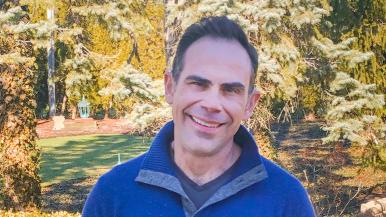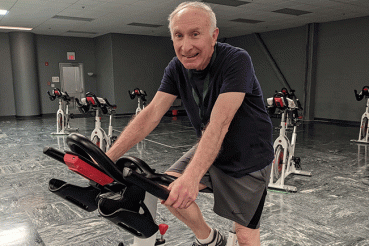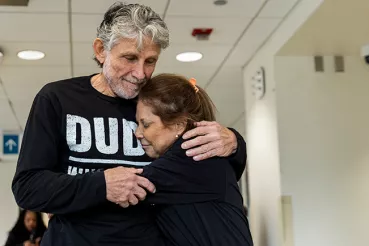An MRI should be a routine procedure. It’s a non-invasive scan, using a magnetic tube to take images of tissues and organs in the body.
But for Marty Lewis, who is hard of hearing, getting an MRI required a little more planning. Marty needed a diagnostic cardiac MRI. But to obtain a good image, the technician needs to be able to speak to the patient lying in the windowless tube. The tech relays instructions regulating patient movements and telling them to hold or resume their breathing.
Marty wears hearing aids but had to remove them for the MRI. He’s adept at lip-reading, but had no way of seeing the technician while in the machine. The protocol simply wouldn’t work for Marty.
“The cardiac MRI was a new experience for me,” Marty said. “I honestly didn’t know how it would feel being unable to wear my hearing aids during the MRI, because they are essential to my world.”
“To patients who have different accessibility needs, we always want to show that RUSH is compassionate and will figure out mechanisms that will work for them.”
A first MRI attempt ended with unusable images. That’s when Marty, as well as his mother Nancy Lawrence (a retired registered nurse), took the initiative to find a system that would work for him. They worked with the Chicago Hearing Society to come up with a plan, which they brought to RUSH Diagnostic Radiology. MRI manager Brian Jarrett, MRI technician Eric Marker, and cardiologist Melissa Tracy, MD, put together an altered protocol, which allowed Nancy to tap his foot to relay instructions during the test at RUSH Oak Brook. She would tap once to have him hold his breath, and twice to resume breathing.
“To patients who have different accessibility needs, we always want to show that RUSH is compassionate and will figure out mechanisms that will work for them,” Dr. Tracy said. “This allows us to expand our reach and ensure that we’re giving optimal care to all of our patients.”
Marty says that patients who need additional help should feel confident in working with medical teams to find solutions.
“My biggest hope is anyone who is either deaf or hard of hearing will feel comfortable enough to take a cardiac MRI exam, if necessary,” Marty says. “More importantly, they should not let their disability hinder their decision making and possibly refuse to take this test. After all, my story is proof of this being a success with adequate help.”




